Facts about the animal kingdom of All animals
Learn more about facts about the animal kingdom of all animals by exploring our site and become a true expert on the animal kingdom. You'll find content created for the best professionals with pictures, videos and opinions.
243 articles

Cockroaches have survived for over 300 million years, evolving into one of Earth's most resilient pests. With their ability to withstand radiation, survive without food for months, and squeeze through the tiniest cracks, they've earned their reputation as nearly indestructible. But nature has developed its...

Firebugs are not poisonous and they are not known to carry any disease which is harmful to humans. Despite their alarming name, they do not pose any particular threat to our well-being. Belonging to the Pyrrhocoridae family, the firebug (Pyrrhocoris apterus) is native to Central Europe and Asia, particularly...
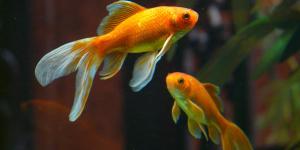
"Despite their global popularity, goldfish are often wrongly perceived as short-lived, disposable pets. In reality, these resilient fish can thrive for 10-15 years, or more, with attentive care. This raises a common question among owners: what is their typical lifespan, and how is it influenced by environment,...

Omnivorous fish are water creatures that eat both plants and animals. Unlike fish that only eat one type of food, these adaptable eaters have bodies that can handle different food sources. They can eat things like algae and water plants, as well as insects, tiny shellfish, and smaller fish. This ability...
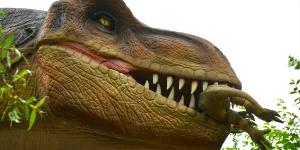
For 165 million years, dinosaurs reigned over Earth, and their diverse diets were pivotal in shaping their evolution, behavior, and ecological roles. From colossal herbivores that ate vast quantities of plants to formidable carnivores that preyed on other dinosaurs, their feeding habits dictated their...

One of the most fascinating tales in Asian culture is the story of the koi fish, which represents symbolizing strength, perseverance, and transformation. This ancient story tells of koi fish swimming upstream against powerful currents, with some eventually transforming into majestic dragons, a metaphor for personal...

The jaw is a defining feature of vertebrates with teeth, and it plays a crucial role in biting, chewing, and survival. From the powerful jaws of a lion to the flexible hinged jaws of a snake, vertebrate species have developed unique jaw structures and teeth adaptations to match their diets and lifestyles....

The snailfish belongs to the group of ray-finned fishes (Actinopterygians) and to the family of Lipariidae, generally known as snailfish or slimy fish. Within this family, 29 genera and more than 300 species have been recognized, although there is little information about many of them. Snailfish are...

In the depths of forests around the world, a silent shadow glides. We have long been fascinated with black panthers, which may be found in both contemporary and ancient mythologies. However, the truth of these enigmatic felines is much more amazing than any work of fiction. They're not even a single species,...

From tropical coral reefs to frigid polar waters, sea anemones have adapted to thrive in almost every ocean environment. While they might look like colorful underwater flowers gently swaying in the current, they are actually skilled predators belonging to the phylum Cnidaria. Their unique combination of...

Gorgonians are types of coral which are found in the order Alcyonacea. This order is commonly known as soft corals, containing corals known as sea fans or sea whips. Rather than a distinct taxonomic category, gorgonian corals are an informally grouped subset of corals which are defined by their structure....

While they may look like underwater plants or rocks, corals are actually animals that build the ocean's largest living structures. These remarkable marine creatures, relatives of jellyfish and sea anemones, create complex ecosystems that support a quarter of all ocean life. From tropical reefs to deep ocean...

Gastropods represent the largest and most diverse class of mollusks, with over 65,000 living species documented across marine, freshwater, and terrestrial environments. From common garden snails to deep-sea slugs, these remarkable invertebrates have successfully adapted to nearly every habitat on Earth...

Deep beneath the ocean's surface, where sunlight can't reach, nature has evolved an extraordinary solution, fish that create their own light. These bioluminescent creatures illuminate the darkness through specialized light-producing organs called photophores, using them to hunt, communicate, and survive...

Picture yourself in a garden, spotting what looks like a venomous coral snake. But on closer inspection, it turns out to be a harmless milk snake. This phenomenon, called mimicry, is one of evolution's most ingenious survival tactics. In nature, organisms have evolved to imitate not just the appearance...
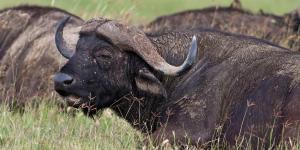
Bovines are animals of the subfamily Bovinae, under the larger taxonomic family Bovidae. Their categorization is important, especially to human civilizations. Throughout history, bovines have been integral in providing for sustenance, infrastructure, industry and many other aspects of human development....
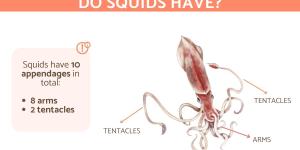
A common misconception about squids is that all their appendages are tentacles. Squids actually have only two tentacles and eight arms. This distinction, while seemingly minor, highlights a key aspect of their specialized hunting adaptations. Tentacles and arms have unique purposes, with distinct structures...

In the world's coldest regions, from the Arctic tundra to Antarctic ice sheets and high mountain peaks, animals have developed remarkable ways to survive extreme conditions. Some change their coat colors with the seasons, others huddle in groups for warmth, and many have evolved specialized features like...

As its name suggests, the Chihuahua Desert is located in Northern Mexico, but it is such a vast area that its geographical range extends into the United States. Although it is a desert, this vast range contributes to its rich biodiversity. In fact, it is one of the most biodiverse deserts in the world....
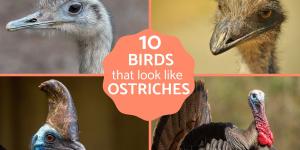
The ostrich is undoubtedly one of the most recognizable flightless birds. However, it's not alone in its unique characteristics. Many other bird species share striking similarities with the iconic ostrich. From their towering stature and powerful legs to their remarkable adaptations, these ostrich-like...
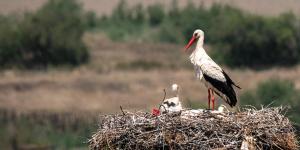
Storks are a variety of bird species which make up the family Ciconiidae, but not all are known to carry out infanticide. The killing of their young is most commonly associated with the white stork (Ciconia ciconia). As with all storks, the white stork has a long body with a similarly elongated neck and...
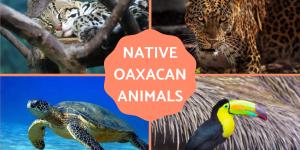
The diversity of wildlife in Mexico is as vast as the country itself. Different regions have varying climates and types of habitat, meaning certain fauna can only thrive in certain areas. The state of Oaxaca is one of the most biodiverse regions in Mexico. In fact, it is one of the most biodiverse regions...
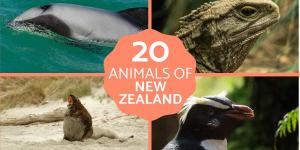
New Zealand, renowned for its stunning landscapes and unique biodiversity, is home to a remarkable array of wildlife. Isolated from the rest of the world for millions of years, this island nation has developed a distinctive ecosystem with many species found nowhere else on Earth. The country's animal...

Clams are bivalve mollusks that play an essential role in aquatic ecosystems. They contribute to their habitats not only by providing a food source for other animals, but also in water filtration, nutrient recycling and other important benefits. They can do so thanks to a specialized anatomy which is...
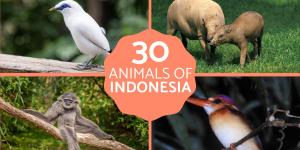
Indonesia, a vast group of islands between Southeast Asia and Oceania, has an amazing variety of wildlife. Its location near the equator and diverse landscapes, like rainforests and coastal mangroves, make it a perfect home for many species. However, this natural wealth is in danger. Many of Indonesia's...

Despite their small size and lack of wings, fleas are notorious pests for pet owners and wildlife. These external parasites survive by feeding on the blood of mammals and birds, including common hosts like dogs, cats, rodents, and even humans. Understanding their life cycle and reproduction is crucial...
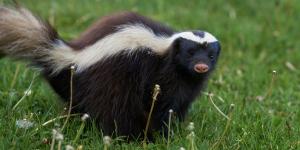
Skunks were once considered types of mustelid from the family Mustelidae, the taxonomic family that includes otters, weasels, badgers and similar mammals. This is due to similarities in their physical appearance and behavior. There are various mustelids that live in Spain, including badgers, otters, pine...
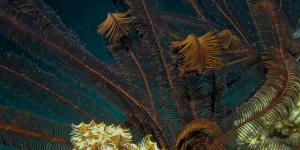
Sea lilies (crinoids) are a group of marine animals with a surprisingly ancient lineage. Despite their plant-like appearance and name, these filter feeders are close relatives of starfish, sea urchins, and sea cucumbers, belonging to the echinoderm phylum. With a fossil record dating back 450 million...

Mexico is considered one of the most megadiverse countries in the world in terms of biodiversity. This means that the flora and fauna of Mexico includes a vast number of species, a great range of ecosystems and high levels of endemic species. One reason for this is its size, being larger than any individual...
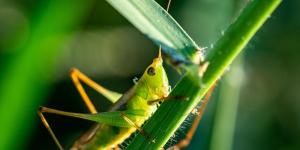
Orthoptera is an order of insects that includes over 20,000 described species, such as grasshoppers, crickets, locusts, and related species. They are known for their ability to jump, thanks to their hind legs, which are significantly longer and more muscular than their front and middle legs. They are...

Crickets are hopping insects related to grasshoppers and katydids found within the order Orthoptera. There are more than 2,400 species of crickets identified worldwide. They are known for their chirping sounds, especially at night, which is how male crickets attract mates. Certain cricket species can proliferate...
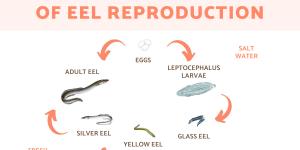
Eels are fish making up the order Anguilliformes, a type of ray-finned fish that are known for their long bodies. Despite all eel species having certain similarities, they are a very diverse order of fish. While most eels live in marine ecosystems, some species move between marine and freshwater environments....
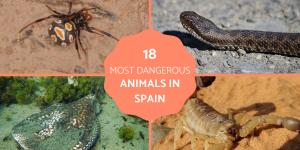
Spain is a country which is known for its sunny beaches, beautiful mountain ranges and Mediterranean climate. However, the climactic diversity of the country is great. With regional climates and seasonal variations, the flora and fauna of this country are equally diverse. While we may not think of Spain...
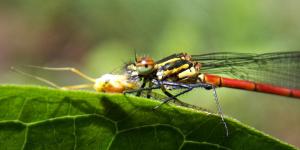
Many people give dragonflies a wide berth, fearing their impressive size and those giant, watchful eyes. These ancient insects, dating back millions of years, are renowned for their agility in the air and their important role in controlling insect populations. However, for many, their shimmering wings...

Dragonflies and damselflies are common sights near freshwater, often mistaken for each other. Despite their shared habitat, these insects belong to distinct suborders within the Odonata family. Millions of years of evolution have shaped them into unique creatures with distinct characteristics.
This AnimalWised...
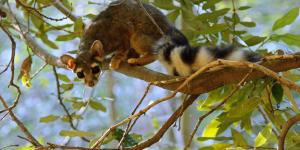
Cacomistles (Bassariscus sumichrasti) are animals that belong to the Procyonidae family, a family of animals that also contains kinkajous, coatis and the raccoon. This latter animal is the most widely distributed procyonid in the world, but the cacomistle is much less known. This is partly due to its much...

New Zealand and Australia are often confused with each other, with some thinking them as being interchangeable. Despite similarities in location and culture, they have very stark differences in terms of geography and biodiversity. Australia is associated with some very dangerous animals, with many people...

If you wanted to impugn someone's intelligence, you may say they have a mosquito brain. The implication is that mosquitoes have such low intelligence they have no brains at all. Being such small invertebrate animals, they are not known for complex cognitive processes such as emotional reactions. They are known...

Belonging to the order Diptera, this incredibly diverse group encompasses a vast array of species, from the familiar housefly to the bizarre botfly. But what allows these insects to thrive in such a wide range of environments? The key lies in their fascinating anatomy. Their bodies are segmented into...
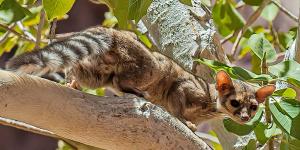
The cacomistle, also known as the ringtail, is a fascinating mammal native to Central and North America. Its name originates from the Aztec language, where it translates to "half-cat" or "mountain lion," depending on the source. They are easily recognizable by their raccoon-like face and bushy tails...
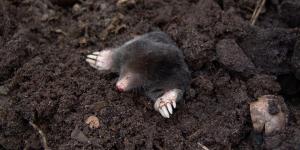
These fascinating mammals have spent millions of years adapting to a life beneath the surface, becoming true champions of the dark, subterranean world. While most are familiar with their burrowing activities, some species even thrive in aquatic environments. Beyond their remarkable digging skills, moles...

Stitch from Lilo & Stitch is a mischievous little creature with a serious curiosity streak. It is partly this curiosity which has endeared this animated Disney character to so many fans of any age, although particularly to millennials and gen Zers. While many of Disney's animated features up to this movie...

The warm embrace of summer nights often brings with it a familiar sound – the chirping of crickets. These nocturnal insects are more than just nighttime serenaders; they're also masters of movement. Their strong hind legs allow them to cover impressive distances in a single leap, a feat that sparks curiosity...

Insects of the Lampyridae family have various common names. Some know them as lightning bugs, others glowworms and many as fireflies. These names refer to their ability to glow in the dark, an ability which occurs thanks to their bioluminescence, a phenomenon that has captured the imagination of anyone...
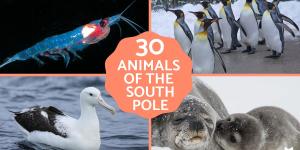
Antarctica is a place on Earth unlike any other, with its enormous ice sheets, majestic glaciers, and surreal scenery. Although the climate on this southernmost continent is harsh and cruel, it nevertheless sustains an incredibly rich and diversified biosphere. Animals in the Antarctic have developed...

There are over 4,800 known frog species found worldwide in a variety of habitats, from rainforests to deserts. They come in a wide range of colors, sizes, and even have unique adaptations depending on their environment. Frogs undergo a remarkable metamorphosis during their life cycle. They start as...
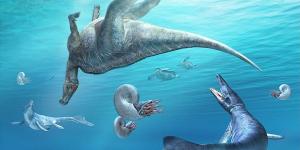
Millions of years ago, the oceans teemed with incredible creatures: prehistoric marine reptiles. These weren't actually dinosaurs, but a separate group of reptiles that adapted to life in the water. They ruled the oceans during the Mesozoic Era (252 million to 66 million years ago) and came in a variety of...

Birds are a class of warm-blooded vertebrates with distinguishing features including feathers, wings, and beaks. They are renowned for their remarkable diversity, encompassing over 10,000 known species. This diversity is evident in their size, shape, coloration, behavior, and preferred habitats. However,...

With its sleek physique, pointed ears, and bushy tail, the cunning fox is a well-known figure in folklore and around the world. These adaptable canines flourish in various environments, ranging from icy tundras to sunny deserts. Nature, in its cleverness, has created a remarkable array of creatures that...

The human nose might not be the most powerful tool in our arsenal, but in the animal kingdom, scent is king. From tracking prey across vast distances to identifying potential mates, some creatures possess an olfactory superpower. The sense of smell in animals, also known as olfaction, is a powerful...
